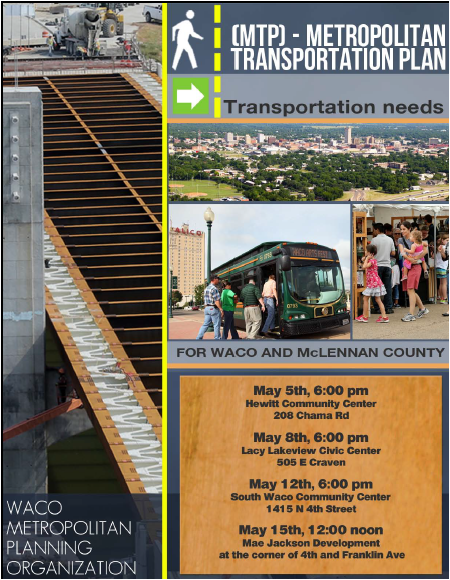Refrigerator Boxes and the Law of Scale
by Felix Landry
The earth has many laws. Some of these laws – like the law of gravity – are well known. Others are less obvious. I’ve noticed a law at work both in nature and in the structure of cities which I call “the law of scale.” There is an important relationship between the size of the creature and the size of the environment it inhabits. They should “scale up” or “scale down” together. If one grows or shrinks without the other, the health of both the creature and the habitat begin to suffer. For example, it is obviously a problem if a mother bird does not make her nest big enough. What may be less obvious is that if the nest is too big that can also cause problems. If a bird builds her nest too large, then the upkeep of the nest eventually consumes the time and energy meant for gathering food and other necessary activities.
This law applies to people as well, but we are not as good at obeying it as the birds seem to be…particularly when it comes to transportation.
 Imagine you work in a busy office building. There are lots of people in the halls all day, but everything generally flows smoothly. Then imagine that for some reason your employer implements the bizarre policy of requiring everyone to wear a refrigerator box whenever you travel the corridors. What would happen? Immediate, aggravating, stressful congestion in the halls. Why? Because your boss has broken the law of scale. You, the creature, got bigger, but the environment did not get bigger. The halls in your office building are built to human scale, not to refrigerator scale. If your boss were determined to continue this refrigerator box policy, the congestion would eventually drive you to take the expensive step of remodeling the building with much wider and longer corridors.
Imagine you work in a busy office building. There are lots of people in the halls all day, but everything generally flows smoothly. Then imagine that for some reason your employer implements the bizarre policy of requiring everyone to wear a refrigerator box whenever you travel the corridors. What would happen? Immediate, aggravating, stressful congestion in the halls. Why? Because your boss has broken the law of scale. You, the creature, got bigger, but the environment did not get bigger. The halls in your office building are built to human scale, not to refrigerator scale. If your boss were determined to continue this refrigerator box policy, the congestion would eventually drive you to take the expensive step of remodeling the building with much wider and longer corridors.
This is very similar to what we do with our current transportation system. When we step out of our homes or offices and into our vehicles, we suddenly explode in size like the incredible hulk. We, the creatures, have scaled up in size, but our environment, the roads, have not scaled up with us. We end up with maddening congestion such as we see along China Spring Hwy or anywhere in the City of Austin. We have broken the law of scale in regard to our city streets, and we will continue to have congestion until we restore the correct proportions.
For 50+ years of vehicle centric development we have tried to deal with this problem by scaling up the environment. We have “hulked out,” we reason, so our roads need to “hulk out” to keep up with us. We have basically fallen into the following pattern:
- More (and bigger) vehicles are on the road,
- Which leads to congested roads,
- Which leads to building wider and longer roads,
- Which in turn increases the distances between destinations,
- Which of course increases our dependence of vehicles,
- Which puts more vehicles than ever on the road.
The above cycle has two major problems in my opinion.
Problem 1: Between steps 2 and 3 whichever government agency wants to build the road must first gather the taxes to pay for the project. We are running out of tax money for road construction and maintenance, and not many people want to raise taxes.
Problem 2: Step 4 boils down to sprawl, which over the long haul decreases the average value of land serviced by the road system, while simultaneously increasing the amount of roads needed. The need for tax revenue increases while the capacity to generate it decreases.
In other words, our current approach to development is leading us to be like the bird who has made her nest too big. We are getting to the point that we must waste valuable resources just to maintain the nest.
Fortunately, there’s another way to approach the problem. We could figure out ways to not “hulk out” between our front doors and our destinations.
 Let’s return to our crazy refrigerator boxes (vehicles) in the corridors (roads) at the office (city) analogy. The refrigerator boxes make each person take up too much space. The root of the corridor congestion is that the halls were not built for such a high space to person ratio.
Let’s return to our crazy refrigerator boxes (vehicles) in the corridors (roads) at the office (city) analogy. The refrigerator boxes make each person take up too much space. The root of the corridor congestion is that the halls were not built for such a high space to person ratio.
Here are some suggestions on how to lower the space to person ratio and ease congestion:
- Don’t take your box on every trip.
- Use smaller boxes.
- Fit more people in fewer boxes. If two or more people are headed to the same destination, they could all take the same box instead of each taking their own.
- Create a system of large high capacity community boxes that travel the main corridors of the office at regular intervals. Anyone could hop into a community box as it passes by decreasing the overall ratio of box area to person area.
Obviously these suggestions have real world counterparts:
- Walk
- Ride a bike
- Car pool
- Public transit
I am not trying to build a “cars are evil” bonfire. We don’t need to get rid of vehicles. But we could choose to scale ourselves down rather than choosing to scale up our road system. We could lower the amount of space people take up traveling on our roads. We could reduce the high vehicle to person ratio that is currently clogging our public right of ways. This “scaling down” could be much less expensive and more sustainable financially in the long run. The great news is that Waco, from what I’ve seen, has a large number of people who would love to lower their own vehicle to person ratio. Yes, we would have to make some initial investments to build the infrastructure to accommodate them. But, with enough support, Waco has great potential to facilitate a much lower vehicle to person ratio which will be a much more sustainable way to satisfy the “law of scale” in the long run.
 Felix Landry is the senior planner and bicycle and pedestrian coordinator for the City of Waco. He and his wife moved here in 2010 from College Station, Texas. They have two young boys.
Felix Landry is the senior planner and bicycle and pedestrian coordinator for the City of Waco. He and his wife moved here in 2010 from College Station, Texas. They have two young boys.
Are you Interested in getting in on the conversation about transportation in Waco? Plan to attend an upcoming Metropolitan Transportation Plan Community input meeting. Meetings are scheduled for May 5, May 8, May 12 and May 15. For more details please visit the website: http://www.waco-texas.com/cms-mpo/ or the Act Locally Waco May Event Calendar.
